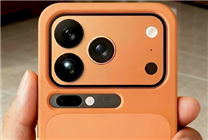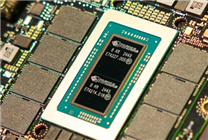Xiaomi 17 Pro Max: The Intriguing Transformation into Apple’s iPhone 17 Pro Max
Summary:
- Merchants are transforming Xiaomi 17 Pro Max into a replica of the iPhone 17 Pro Max using protective cases and screen imagery.
- This move plays into smartphone aesthetics, raising questions about brand identity and originality.
- The Xiaomi 17 series broke sales records upon launch, showcasing strong market demand.
In an unexpected twist in the smartphone market, merchants have begun offering a service that instantly transforms the Xiaomi 17 Pro Max into an apparent replica of the Apple iPhone 17 Pro Max. This has sparked considerable interest and debate among consumers and industry watchers alike.
The Transformation
Reports indicate that several retailers are using protective cases that not only fit the Xiaomi device but are also designed with visual elements that mimic the Apple aesthetic. Some customers have pointed out the remarkable similarity, highlighting that, at a casual glance, the two phones look virtually identical. This practice, although controversial, capitalizes on the market’s fascination with brand prestige and visual design.
Consumer Reactions
Responses from the public have been mixed. Some users are impressed by the transformation, noting the cleverness of the alteration. Others, however, argue that authentic brand identity is being undermined. While the initial visual impression may leave many convinced of their purchase, a closer inspection reveals distinguishing features that set the two devices apart. This raises an essential question in the smartphone industry: how far will consumers go in adapting or modifying their devices to align with desired brand images?
Successful Launch of Xiaomi 17 Series
The timing of this transformation aligns closely with the launch of the Xiaomi 17 series, which saw unprecedented success. Official announcements reveal that within just five minutes of its debut, the series broke sales records for new high-end smartphones in the market. Lei Jun, the founder of Xiaomi, celebrated the success, stating that the Xiaomi 17 Pro Max alone garnered over 50% of sales within the series.
Such remarkable performance indicates a strong consumer interest, hinting at both the innovation in the Xiaomi lineup and the competitive strategies employed within the smartphone market. As more users opt for the Xiaomi 17 series, the question of brand loyalty and identity continues to evolve.
Market Implications
This phenomenon of transforming a Xiaomi phone into an Apple-like device elicits broader implications for market dynamics. With smartphone functionalities largely overlapping across brands, many consumers prioritize aesthetics and design elements. As one brand’s success inspires imitation, other brands may struggle to maintain a unique identity amidst the rising trend of aesthetic mimicry.
Moreover, the willingness of consumers to embrace aftermarket modifications reveals an underlying desire for status symbolization through technology. It raises the stakes for manufacturers, compelling them to innovate not only in terms of technology but also in branding, consumer engagement, and market positioning.
Conclusion
The current smartphone landscape is being reshaped by both consumer desires for brand prestige and the evolving practices of merchants catering to those desires. With the Xiaomi 17 Pro Max’s quick transformation into an iPhone lookalike, the lines between brand identity and aesthetic imitation are becoming increasingly blurred. As this trend continues to unfold, observers will undoubtedly be watching closely to see how it influences future market behaviors and device innovation.
In summary, the convergence of brand identity with consumer demand indicates a compelling future for the smartphone industry—one that thrives on aesthetic transformations as much as it does on technological advancements.





